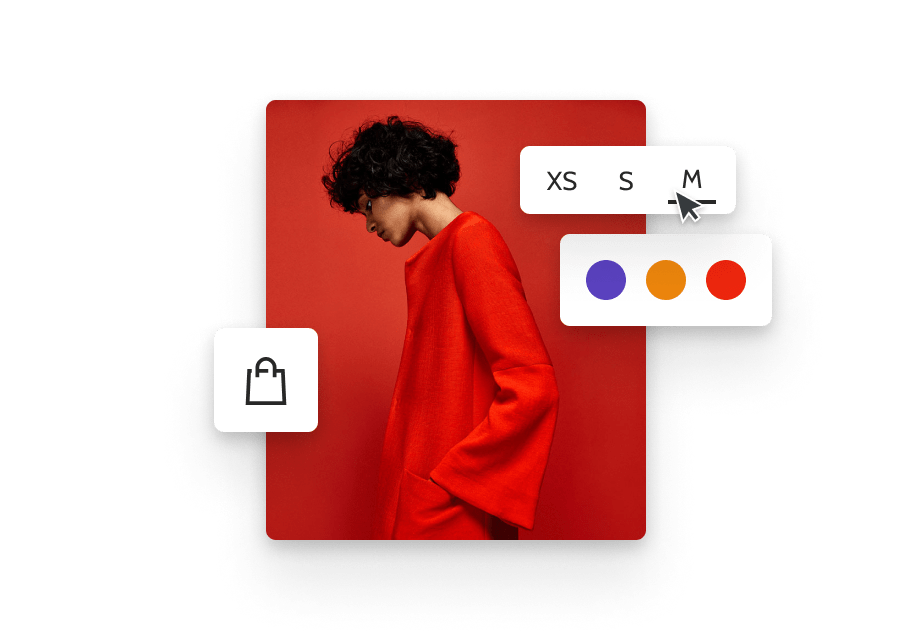Decoding The Burger King Logo Design & Its History: Unveiling Secrets
The Burger King logo is iconic and instantly recognizable. But what makes it so special?
The history and design of the Burger King logo reveal much about the brand’s identity and evolution. Burger King, founded in 1954, has seen many changes. Over the years, its logo has evolved, reflecting shifts in branding strategies and design trends.
From the original design to the current one, each logo tells a story. Understanding the elements of these designs can offer insight into the brand’s journey and what it represents today. This exploration of the Burger King logo’s history will uncover the reasons behind its transformations, the design choices, and how it has become a symbol of fast food culture worldwide.
Introduction To Burger King Logo
Burger King, one of the largest fast-food chains globally, has a logo recognized by millions. The Burger King logo has undergone several changes over the years, reflecting the brand’s evolution and market trends. Let’s dive into the history and significance of this iconic logo.
Brief History
Burger King started in 1953 as Insta-Burger King. The original logo featured a simple design with the restaurant’s name. In 1954, the company rebranded to Burger King, and the logo was revamped to match. The new design showcased a king sitting on a burger, emphasizing the brand’s playful spirit.
In 1969, the logo changed to a more modern look. It featured the name “Burger King” sandwiched between two bun halves. This design became iconic and remained mostly unchanged for many years. In 1999, the logo was updated with a sleeker, more dynamic look. The new design included a swirl around the burger, symbolizing the brand’s energy and forward movement.
Most recently, in 2021, Burger King introduced a retro-inspired logo. This new design pays homage to the 1969 logo, with a fresh and modern twist. It reflects the brand’s commitment to quality and tradition while embracing contemporary trends.
Importance Of Logo
A logo is more than just a symbol; it represents a brand’s identity. For Burger King, the logo is a crucial part of its marketing strategy. It helps create a strong brand recall and establishes a connection with customers.
The Burger King logo is designed to be simple yet memorable. Its colors, shapes, and design elements are carefully chosen to evoke specific emotions. The logo’s bold colors and playful design make it stand out in the competitive fast-food market. It communicates the brand’s promise of delicious, high-quality food.
The recent logo redesign also plays a significant role. It shows that Burger King is mindful of its heritage and ready to adapt to modern tastes. This balance of tradition and innovation is vital for maintaining the brand’s relevance in a constantly changing market.

Credit: www.designhill.com
Early Logo Designs
The Burger King logo has evolved significantly over the years. The early designs tell a story of creativity and brand identity. This section will explore the journey of Burger King’s logo from its inception to its evolution over the decades.
First Logo
In 1954, Burger King introduced its first logo. It featured a simple design with a cartoonish king sitting atop a burger. The king wore a crown and held a soda. The design was playful and aimed to attract families. It reflected the fun and friendly atmosphere of the restaurant.
Evolution Over Decades
Over the years, the Burger King logo went through several changes. Each change aimed to modernize the brand while retaining its core identity. Let’s look at some key transformations:
- 1969: The logo featured two buns with the brand name “Burger King” in between. This design highlighted the core product – burgers.
- 1994: The logo was refined to a sleeker, more modern look. The colors became brighter, and the font was updated to a bold, sans-serif style.
- 1999: A major redesign introduced a more dynamic logo. It featured a blue swirl around the buns, giving a sense of motion and energy.
The logo’s evolution reflects changing branding strategies and consumer preferences. Each redesign kept the essence of Burger King, focusing on its iconic burgers and fun, family-friendly atmosphere.
Modern Logo Design
The modern logo design of Burger King has seen significant transformations over the years. Each redesign reflects the evolving brand identity and market trends. The latest version of the Burger King logo is a nod to simplicity and nostalgia. This contemporary design emphasizes clean lines and vibrant colors, making it memorable and appealing to a broad audience.
Recent Changes
In 2021, Burger King unveiled its latest logo redesign. This change marked a shift towards a more retro look, reminiscent of the 1969 logo. The new design features a flat, minimalist style, moving away from the 3D elements of the previous logo.
- Flat design for a modern look
- Return to the classic color scheme
- Emphasis on simplicity and clarity
The recent changes aim to create a timeless and versatile brand image. The flat design enhances visibility on digital platforms, ensuring the logo looks great on screens of all sizes.
Design Elements
The modern Burger King logo incorporates several key design elements. These elements work together to create a cohesive and recognizable brand identity.
| Element | Description |
|---|---|
| Typography | Bold, rounded font for a friendly look |
| Color Scheme | Bright red, yellow, and blue for high visibility |
| Shape | Burger bun shape for instant recognition |
The bold, rounded font gives the logo a friendly and approachable feel. The bright colors ensure high visibility, making the logo stand out in various settings. The burger bun shape ties back to the core product, reinforcing brand recognition.

Credit: www.linkedin.com
Color Psychology
Color psychology plays a crucial role in logo design. Colors evoke emotions and convey messages without words. For Burger King, color choices have been strategic and impactful. Let’s explore the psychology behind their color palette.
Color Choices
Burger King’s logo primarily uses red, yellow, and blue. Each color holds significant meaning. Red symbolizes energy and passion. It grabs attention and stimulates appetite. Yellow represents happiness and warmth. It evokes a sense of fun and friendliness. Blue adds a touch of reliability and trust. This combination creates a strong and inviting brand image.
Impact On Consumers
The colors in Burger King’s logo influence consumer behavior. Red and yellow together are known to increase hunger. They create a sense of urgency and excitement. This encourages quick decision-making and impulse purchases. Blue, though used minimally, adds balance. It reassures customers of the brand’s reliability. These colors work together to attract and retain customers.
Typography
Typography plays a crucial role in logo design. It conveys the brand’s message and personality. The Burger King logo is no exception. Its typography is a key element that makes it recognizable and memorable.
Font Style
The font style of the Burger King logo is bold and rounded. This font choice creates a friendly and approachable feeling. The rounded edges of the letters make the logo look soft and inviting. The font style is also modern, which helps the brand stay relevant.
Readability Factors
Readability is essential for any logo. The Burger King logo excels in this area. The letters are well-spaced and easy to read. Even from a distance, the logo remains clear and legible. The use of capital letters adds to its readability. Capital letters are generally easier to read at a glance.
Another factor is the color contrast. The bright colors of the Burger King logo enhance its readability. The white letters against a red background stand out. This contrast ensures that the logo is visible in various settings.
The font size also plays a role in readability. The Burger King logo uses a large font size. This makes the text prominent and easy to read. Whether on a billboard or a small package, the logo maintains its readability.
| Readability Factor | Details |
|---|---|
| Font Spacing | Well-spaced letters for clarity |
| Color Contrast | Bright colors with strong contrast |
| Font Size | Large font size for visibility |
In summary, the typography of the Burger King logo is carefully designed. It combines bold, rounded fonts with excellent readability. This ensures the logo is not just attractive but also effective in communication.

Credit: www.designhill.com
Symbolism In Design
The Burger King logo is more than just an emblem. It captures the essence of the brand. Every part of the logo tells a story. The design elements connect deeply with the audience. They convey values, heritage, and trust.
Iconic Elements
The Burger King logo features a simple yet iconic design. It includes two buns and the brand name. The buns symbolize the core product – burgers. The choice of colors, red and yellow, evokes hunger and excitement. These colors are also associated with fast food and energy. The bold, rounded font signifies friendliness and approachability. This makes the logo memorable and welcoming.
Hidden Messages
Some elements of the Burger King logo contain subtle messages. The curvature of the buns frames the text, resembling a smile. This suggests happiness and satisfaction. The logo’s simplicity reflects the brand’s straightforward approach to food. It emphasizes quality and taste without unnecessary complexity. The overall design creates a sense of familiarity and nostalgia. It appeals to both loyal customers and new ones.
Influence On Branding
The Burger King logo has a significant influence on branding. It shapes how customers perceive the brand. The logo’s design plays a vital role in creating a strong brand identity and positioning in the market.
Brand Identity
The Burger King logo is simple yet effective. The use of bold colors makes it memorable. The logo’s design reflects the brand’s playful and approachable nature. The burger icon in the logo instantly connects with the product. This immediate recognition reinforces the brand’s identity. The use of red and yellow colors stimulates appetite. It also conveys energy and excitement. This helps in creating a lasting impression.
Market Position
The logo helps Burger King stand out in a crowded market. It differentiates the brand from its competitors. The unique design appeals to a broad audience. It conveys a message of fun and enjoyment. This positions Burger King as a go-to place for quick, tasty meals. The logo’s consistency over the years has built strong brand loyalty. Customers know what to expect. The logo assures quality and familiarity. This consistency plays a crucial role in maintaining market position.
Future Of The Logo
The Burger King logo has evolved significantly over the years. As the brand continues to grow, the logo must also adapt to new trends. Here is a look into what the future holds for the Burger King logo.
Predicted Trends
In the coming years, logos will likely become more minimalistic. Simplicity is key. Consumers prefer clean and straightforward designs. This trend is already visible in many brand logos today.
Another trend is the use of bold colors. Bright and eye-catching colors make logos stand out. They attract attention and enhance brand recognition.
Moreover, logos are becoming more versatile. They need to look good on various platforms. From mobile screens to billboards, logos must be adaptable. This versatility ensures a consistent brand image.
Potential Updates
One possible update for the Burger King logo is a simplified design. Removing unnecessary elements can make the logo cleaner. A minimalistic approach can appeal to modern consumers.
Another update could be a color refresh. Using brighter shades can make the logo more vibrant. This change can help the logo stand out in a crowded market.
Lastly, adaptive design is crucial. The logo should look good on all platforms. This includes social media, websites, and physical stores. An adaptive logo ensures a consistent brand experience.
In conclusion, the future of the Burger King logo is promising. Keeping up with design trends and potential updates can help the brand stay relevant. A modern and adaptable logo will continue to attract consumers and maintain brand loyalty.
Frequently Asked Questions
What Is The Origin Of The Burger King Logo?
The Burger King logo was first introduced in 1954. It has gone through several redesigns. The current logo, featuring a stylized burger bun, was introduced in 2021.
How Has The Burger King Logo Evolved?
The Burger King logo has evolved to reflect modern design trends. The latest redesign in 2021 features a minimalist, retro-inspired look, emphasizing simplicity and bold colors.
What Does The Burger King Logo Symbolize?
The Burger King logo symbolizes the brand’s commitment to quality and taste. The stylized burger bun and vibrant colors represent freshness, flavor, and fun.
Why Did Burger King Change Its Logo In 2021?
Burger King changed its logo in 2021 to reflect its new brand identity. The redesign focuses on a retro-modern aesthetic that aligns with their commitment to real, delicious food.
Conclusion
The Burger King logo has evolved, reflecting its brand identity. Each change tells a story of growth and adaptation. The design remains iconic and recognizable. It connects with customers worldwide through simplicity and color. Its history reveals the brand’s commitment to staying relevant.
From the 1950s to today, the logo symbolizes delicious food and memorable experiences. Understanding its evolution helps appreciate the brand’s journey. The Burger King logo is more than just an image; it’s a part of fast-food history.






